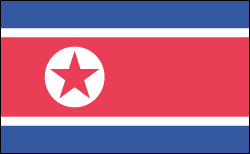2010 Year in Review - North Korea

Major World News Stories of 2010
North KoreaNorth Korea provokes South with brinkmanshipWhile North Koreans endured continued food shortages and dire economic hardship, the government continued its pursuit of advanced nuclear technology and taunted South Korea with provocative military action. In March 2010, the South Korean warship Cheonan was sunk in an area of the Yellow Sea that's in dispute with North Korea. Forty-six sailors were killed. South Korea suspected North Korea was responsible and ordered an international investigation so the results of the probe would be perceived as impartial. In May, investigators produced a piece of a torpedo propeller that they believed had a North Korea serial number, evidence, South Korea said, that the North was responsible. South Korea then formally accused North Korea of launching the attack; North Korea denied the accusation and threatened "all out war" if South Korea moved to punish North Korea or retaliate. Tension between the two nations reached a crisis point. South Korea cut trade with North Korea, closed sea lanes, and blasted propaganda at the border through loud speakers. The UN Security Council condemned the attack, but because China balked, it stopped short of blaming North Korea. Conditions further deteriorated in November when North Korea attacked Yeonpyeong, a small island in South Korea located near the maritime border between the North and South, killing two soldiers and two civilians and leveling entire neighborhoods. UN Secretary-General Ban Ki-moon called the attack "one of the gravest incidents since the end of the Korean war." South Korea was restrained in its response, but sent a flotilla of warships to the Yellow Sea. The U.S. dispatched a group of aircraft carriers and participated in the naval exercises. Prior to the attack, South Korea had undertaken artillery drills in the same area but said the shots were not fired toward North Korea. Just days before the incident between North and South Korea, Siegfried Hecker, a Stanford professor and former director of the Los Alamos National Laboratory, said that during a visit to North Korea, officials gave him a tour of a uranium-enrichment facility that contained 2,000 centrifuges that can be converted to produce nuclear weapons. Hecker described the facility as sophisticated and "ultra modern." Many speculated that North Korea's provocative actions were intended to boost the credibility and prominence of Kim Jong Un, Kim Jong-il's likely successor. At the Korean Workers Party conference in September 2010âthe first in nearly 30 years, President Kim promoted his third son, Kim Jong Un, to the rank of four-star general, gave him a seat on the party's Central Committee, and appointed him as vice chairman the party's military commission, paving the way for him to take over as president. Little is known about Un, who is in his late 20s, other than he attended a private boarding school in Switzerland. |
- More from 2010 News of the World









